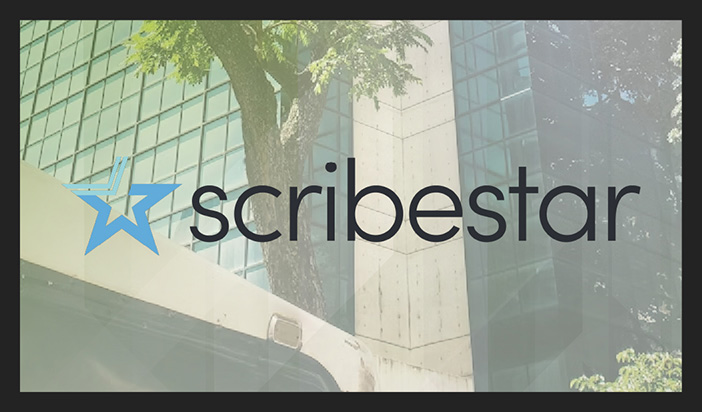Helping Wrycan reduce NFPA’s publishing costs and create new digital products
Project takeaways
98.5% reduction in man-hours per new publication, from 70 hours down to less than one.
3,500 total hours saved across the existing Redline catalogue.
Full automation implemented, enabling all 300 NFPA publications to include Redline editions.
Human error eliminated, saving significant time and production costs.
“When producing the print version of their Redline products, the change markup and storage approach used by Wrycan and DeltaXignia ensures the pagination of the final document is preserved perfectly from the original safety code or standards document.”
Daniel Reed, Managing Director, Wrycan
About Wrycan
Founded in 2003, Wrycan, Inc. delivers Content Engineering services and technology to publishers and content producers. Wrycan’s Content Engineering solution bridges the gap between content production and digital delivery. Companies building web and mobile platforms leverage our turn-key solution to successfully deliver content to their customers.
Headquarters
MA, United States
Company Size
SMB (0-100 employees)
Industry
Information Technology & Services
Website
www.wrycan.com
Introduction
It is essential that organisations which publish reference material relied upon by professionals ensure that their content is accurate and up-to-date. This is particularly vital in fields such as law, engineering, and medicine. It is desirable, then, that such material should be stored in a single repository for ease of updating, version control, and dissemination.
Background
The Karnov Group Denmark is a Danish legal publishing house which provides a legislative overview to the legal profession, courts of law, accountants and local government employees in Denmark. It has been established for over 150 years and currently has 150 employees at its Copenhagen headquarters and 550 associated professionals. It is part of the Karnov Group AB, based in Sweden, which had a turnover in the last financial year of SEK 878M. Every year it publishes Karnov’s Law Books. In addition, Ugeskrift for Retsvæsen (Weekly Journal for the Judiciary), other professional journals and casebooks are published weekly or annually.
The Challenge
Manually merging XML sources
In 2017, Karnov Group Denmark bought Norstedts Juridik, a Swedish legal publisher, and set about merging their document sources. Both companies published the Swedish legislation, known as the Swedish Code of Statutes or SFS, online and in print, and both used in-house XML sources based on PDF sources provided by Regeringskansliet, i.e. the Swedish government. But the companies used separate tag sets and their own interpretations of the semantics in the PDFs. They also enriched the basic law text with extensive annotations, links to (and from) case law, and so on. And, in the case of Norstedts, the XML source is continually updated to support their flagship product, the so-called Blue Book, a printed book of the entire in-force SFS, updated yearly as the law itself changes.
It made little sense to continue maintaining the two SFS sources separately, of course. Instead, what was needed was, essentially, the sum of the two, with annotations, missing versions (significant gaps existed in the versions’ histories), and so on, added. There were 8-9,000 separate statutes, occupying a total of about 16,000 files, each varying in size from a few Kbytes to 10 or 12 Mbytes, with an average of around 200 Kbytes. So, obviously, the task of merging these two datasets was enormous and needed to be automated somehow.
At first glance, in order to maintain a single source of legislative information it might be enough to simply pick one XML source and use that. However, both companies had their existing online systems and customer bases with differing product offerings. As suggested above, the sources described the same thing, the Swedish Code of Statutes, but the sets were not an exact match. Sometimes one company would have SFS documents, the other didn’t, and often, there were significant gaps with older versions of individual chapters and paragraphs. It made little sense to throw any of that away just to make the merge simpler.
There was also the matter of the Norstedts flagship product, the printed law book, that had to be included in any future offerings, so anything written specifically for that book had to be included.
Similarly, Karnov included extended notes in their SFS content and made that available as a separate product, which meant that they would have to be preserved, too. Therefore, in one way or another, the respective SFS sources would have to be merged.
The Solution
Consult and automate XML merging
It would obviously be a huge undertaking to carry out this merge manually so in early 2018 Karnov Group recruited Ari Nordstrom as XML guru to address this problem. Ari is a content architect and XML expert with over twenty years of experience in single-source document management and publishing, encompassing most XML standards in use today, from schema languages to XSLT, XQuery, and XProc. His past clients include organisations such as Volvo Cars, The Swedish Federation of Farmers, LexisNexis, and many others. Ari was tasked with managing the project to merge the two disparate SFS sources, and then to devise a repeatable method for updating the documents as laws are made, revised or repealed.
Ari’s proposal was as follows:
In order to merge the SFS content into a single XML source first convert both sources into a single exchange format. Then compare these versions using DeltaXignia Compare, and then do the actual merge based on the difference file produced. Finally, convert the merged content into a future editing format. This process was to be done in six stages:
- Create a DTD2 describing a common exchange XML format (EXC DTD), essentially the sum of the semantics found in the respective sources.
- Update an existing, or create a new, authoring format (KG++ DTD), in which the merged SFS corpus can be maintained and updated in the future.
- Convert both sources to the common exchange format, at times up-converting and fixing various semantic constructs so they’d match each other.
- Compare the converted sources with each other using an XML differencing tool that merges the sources and adds markup to indicate any differences.
- Address those differences, one by one, to produce properly unified SFS documents with a single main law text and clearly identified enhancements, still in the exchange format.
- Convert the unified SFS documents to the authoring XML (KG++ DTD) format.
The various transformations were performed using XSLT pipelines managed by XProc. Once both sources were in exchange format, they needed to be compared with each other. For this, Ari chose what many see as the industry standard for comparing XML, the DeltaXignia Compare solution from DeltaXignia Ltd. Ari was familiar with DeltaXignia Compare when he joined Karnov, and it was one of those tools that he really wanted to use in a big project, having listened to DeltaXignia and others discuss the product and differencing at XML Prague and Balisage.
DeltaXignia Compare compares two XML files, “A” and “B”, with each other according to predefined rules and inserts differencing markup to show where the differences lie. DeltaXignia Compare can optionally output an HTML representation of the differenced A and B files, which proved helpful in this project when discussing the merge with various project stakeholders. Crucially, it was in Step 4 where the unique functionality of the DeltaXignia Compare solution from DeltaXignia Ltd proved invaluable. For example, when comparing sources that supposedly have the same base, along with some definable differences, it is useful to tell the compare process that certain nodes are intended to be the same. In DeltaXignia Compare, you tell the application by adding DeltaXignia:key attribute values to any nodes that are the same in both sources.
“Senior technical specialists at Wrycan carried out detailed evaluations of the available technologies and concluded the best results and lowest project risk would be achieved by integrating DeltaXignia Compare from DeltaXignia”
Daniel Reed, Managing Director, Wrycan
Let's Deal with Change
DeltaXignia’s products are used throughout the world, from SMEs to global enterprises. Our comparison and merging software transform the way our customers handle change in their documentation and data. If the above story resonated with your own challenges get in touch with us by either booking a discovery call or filling in our contact form.
Related Stories

How Karnov Group Merged Two Legal Publishing Companies’ Incompatible Content Databases

Semcon saves up to 50% of the time required to validate revised documents with DeltaXignia

Underpinning Efficiency and Compliance in Capital Markets with DeltaXignia
Never miss an update on DeltaXignia
Sign up to the DeltaXignia newsletter to get the latest on DeltaXignia and other company news.

